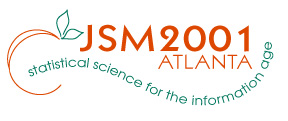|
Title
|
Room
|
|
Monte Carlo Methods in Bayesian Computation
|
M-International Salon C
|
|
Date / Time
|
Sponsor
|
Type
|
|
08/05/2001
8:15 AM
-
4:15 PM
|
ASA, Section on Bayesian Stat. Sciences*
|
Other
|
|
Organizer:
|
n/a
|
|
Chair:
|
n/a
|
|
Discussant:
|
|
|
CE Presenter
|
Joseph Ibrahim
Joseph Ibrahim
Ming-Hui Chen
Ming-Hui Chen
|
Description
As is well-known, in advanced Bayesian computation, there are two major challenges. These are i.) how to sample from posterior distributions and ii.) how to compute posterior quantities of interest using MCMC samples. These are two equally important aspects in Bayesian computations. During the last decade, Markov chain Monte Carlo (MCMC) methods for sampling high dimensional posterior distributions have been rapidly developing. The MCMC literature is now very rich. However, the importance, usefulness, and the difficulty of computing posterior quantities using MCMC samples has not been fully explored in most of the Bayesian computational literature. In this short course, we will present updates on how to efficiently sample form posterior distributions and discuss how to compute posterior quantities of interest using MCMC samples. We will examine each of these issues in detail and heavily focus on computing various posterior summaries from a given MCMC sample. Several topics are covered, including techniques for MCMC sampling, Monte Carlo methods for estimation of posterior expectations, improving simulation accuracy, marginal posterior density estimation, estimation of normalizing constants, highest posterior density interval calculations, and posterior computations for proportional hazards models and Dirichlet process models. We will also discuss computations involving model comparisons, including both nested and non-nested models, marginal likelihood methods, ratios of normalizing constants, Bayes factors, the Savage-Dickey density ratio, the reverse jump algorithm, and model adequacy using predictive and latent residual approaches. The course will be taught with an applied flavor, and many applications and cast studies in clinical trials and environmental health will be presented to demonstrate the above mentioned techniques.
The prerequisites include one course in statistical inference and Bayesian theory at the level of Casella and Berger (1990) and Box and Tiao (1992). The audience's background should include some familiarity with basic Bayesian models. Exposure to two or three conjugate models should provide enough background to motivate the examination of the posterior distribution upon which this short course will focus. The audience should also have some exposure to applied statistics, as this will help motivate the goals of the computations. Thus, this course would be most suitable for those who second or third year graduate students in statistics or biostatistics, or who have received MS or PH.D degrees in statistics, biostatistics, or other related fields.
|
|

